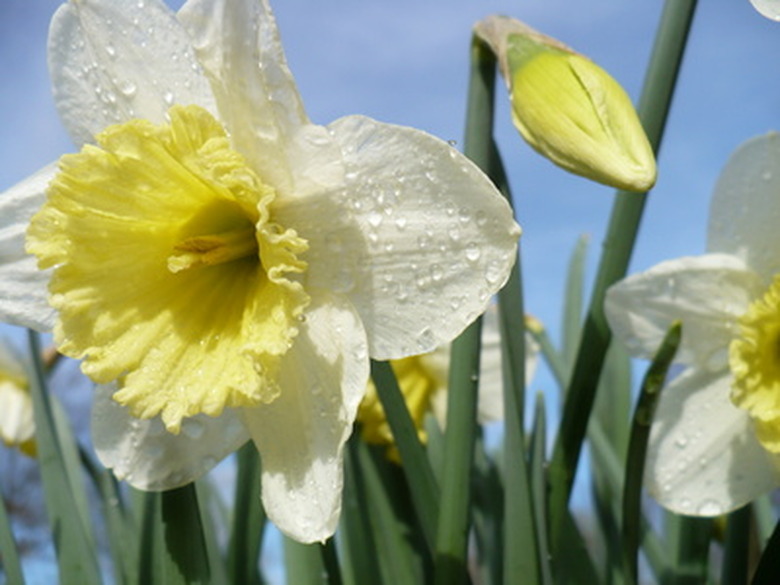The Best Plants For The East Side Of The House
The east side of a house or building is an excellent place for varieties of plants, shrubs and trees which require partial sun, but do not tolerate the rays of the stronger afternoon sun. In the north, homeowners should plant evergreens which need protection from scalding winter sun on the east side of the house. In the south, homeowners should plant specimens that grow in full sun in cooler summer areas, but need protection from the combined heat and intense sunlight of their hot summers.
Japanese Yew
Widely planted as foundation plants, Japanese yew (Taxus spp.) thrive when they are planted on the east side of a house, especially if it receives shade during part of the morning from a tree or building. Japanese yews prefer partial to full shade and relatively moist soil. Some varieties grow up to 20 feet high, but yews as foundation plantings are often pruned to maintain a desired size and shape.
- The east side of a house or building is an excellent place for varieties of plants, shrubs and trees which require partial sun, but do not tolerate the rays of the stronger afternoon sun.
Yews are either male or female; the female produces red berries in the fall which persist on the plants into winter. According to the University of Minnesota Extension, yews need protection from winter sun, which can scald their leaves if it suddenly goes behind a cloud, casting the trees immediately into shadow and into markedly colder temperatures. A site with an eastern exposure offers them some protection from this phenomenon.
Spring-Flowering Bulbs
Blooming in the mild, cool weather of spring, bulbs such as tulips, daffodils, crocus and hyacinth are well-suited for growing on the east side of the house. The cool morning sun will provide bulbs with their requirement for sun, states the University of North Carolina Extension, and they will not be exposed to the hotter afternoon and late afternoon sun. Exposure to high temperatures or intensely hot sunshine causes their flowers to fade rapidly.
Ferns
Available in varieties that range in size from a few inches high to a small tree, ferns belong to several genera, each of which have varying growth requirements. Varieties of ferns that are commonly planted in home gardens primarily prefer partial shade, which makes them ideal additions to garden beds on the east side of the house. They benefit from the cool morning sun and protection from the hotter afternoon rays. Ferns vary in their winter hardiness, so choose varieties that are suited for your particular locale.
- Yews are either male or female; the female produces red berries in the fall which persist on the plants into winter.
- According to the University of Minnesota Extension, yews need protection from winter sun, which can scald their leaves if it suddenly goes behind a cloud, casting the trees immediately into shadow and into markedly colder temperatures.
